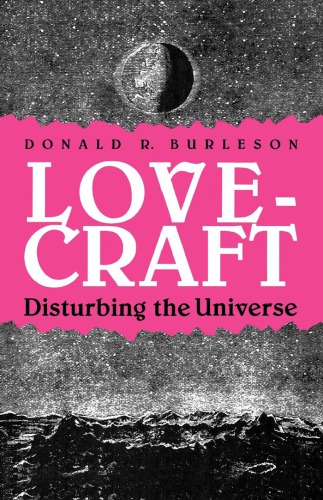

Most ebook files are in PDF format, so you can easily read them using various software such as Foxit Reader or directly on the Google Chrome browser.
Some ebook files are released by publishers in other formats such as .awz, .mobi, .epub, .fb2, etc. You may need to install specific software to read these formats on mobile/PC, such as Calibre.
Please read the tutorial at this link. https://ebooknice.com/page/post?id=faq
We offer FREE conversion to the popular formats you request; however, this may take some time. Therefore, right after payment, please email us, and we will try to provide the service as quickly as possible.
For some exceptional file formats or broken links (if any), please refrain from opening any disputes. Instead, email us first, and we will try to assist within a maximum of 6 hours.
EbookNice Team

Status:
Available4.6
19 reviews
ISBN 10: 0813193192
ISBN 13: 9780813193199
Author: Donald R Burleson
Howard Phillips Lovecraft (1890–1937) has been described variously as the successor to Edgar Allan Poe, a master of the Gothic horror tale, and one of the father of modern supernatural fantasy fiction. Published originally in pulp magazines, his works have grown in popularity since his death, so that more than thirty editions are currently in print.
Yet only recently has Lovecraft received serious attention from literary critics. And until now no one has examined his work from a post-structuralist perspective. Donald Burleson fills that void, for the first time in an extended study bringing the resources of deconstruction to bear on the works of this modern gothicist.
In an introductory overview, Burleson gives an unusually readable account of deconstruction theory and terminology, a field all too often discussed in densely opaque fashion. He goes on to deconstruct thirteen Lovecraft stories, delving into their fascinating etymological mazes, abundant ambiguities, and shifting levels of meanings. His lively and remarkably jargon-free readings explore Lovecraft's rich figurality to unprecedented depths.
At the same time Burleson develops the view that in practicing self-subversion and structural displacement, literary texts perpetuate themselves. His final chapter explores the broad themes running though Lovecraft's fiction, arguing that these themes in themselves prefigure the deconstructive gesture.
This insightful and provocative volume will go a long way toward displacing the label of popular writer and establishing Lovecraft as an important figure in American literature.
1. Pre-Iude: The Manner of Reading
2. "The Statement of Randolph Carter"
3. "The Terrible Old Man"
4. "The Cats of Ulthar"
5. "The Nameless City"
6. "The Outsider"
7. "The Music of Erich Zann"
8. "The Call of Cthulhu"
9. "Pickman's Model"
10. "The Strange High House in the Mist"
11. "The Colour Out of Space"
12. "The Dunwich Horror"
13. "The Shadow over Innsmouth"
14. "The Haunter of the Dark"
15. Deconstructing Lovecraft: An Open "Conclusion"
lovecraft disturbing the universe
lovecraft universe explained
the universe 25 experiment
the universe 25
the lovecraftian horrors
hp lovecraft universe explained
Tags: Donald R Burleson, Lovecraft, disturbing